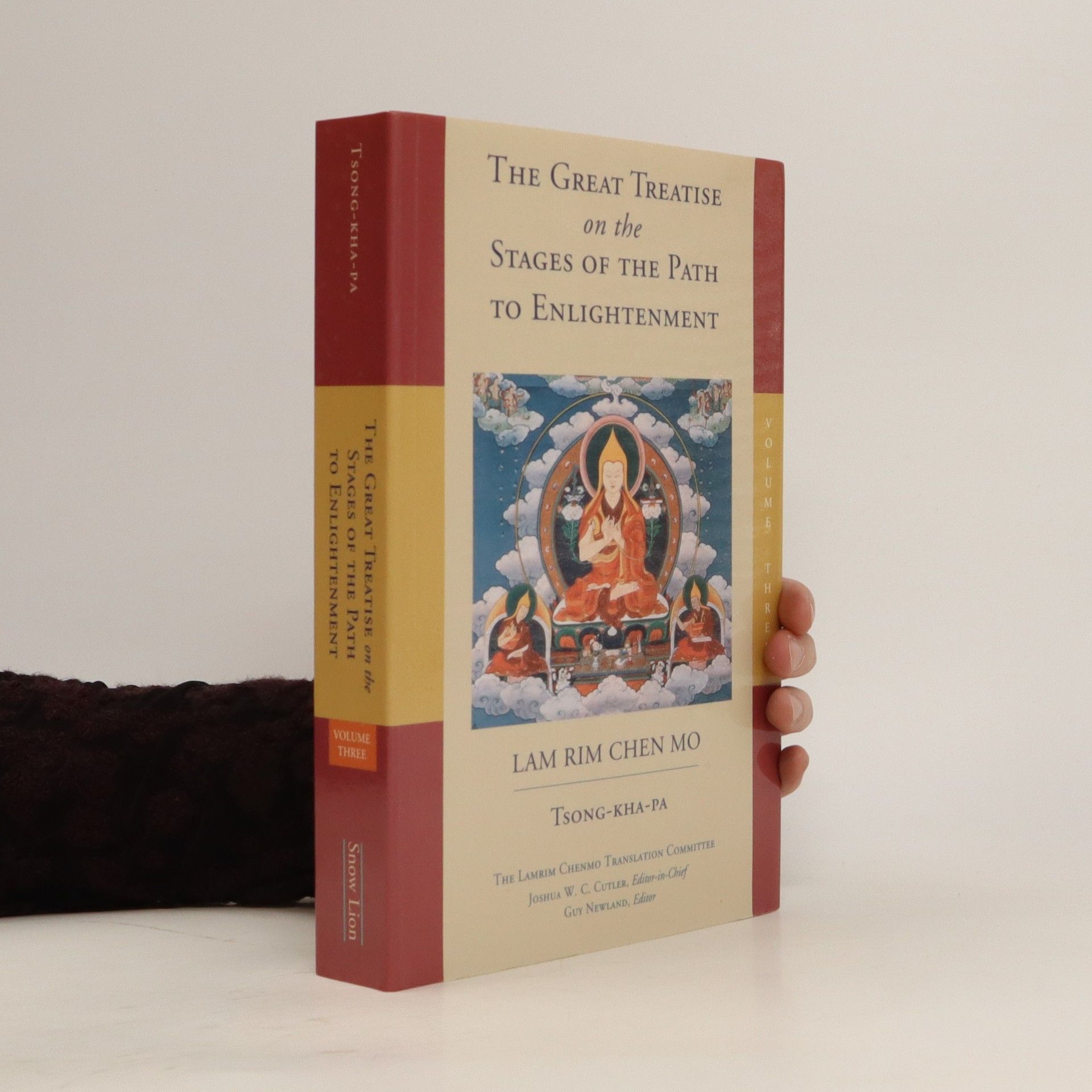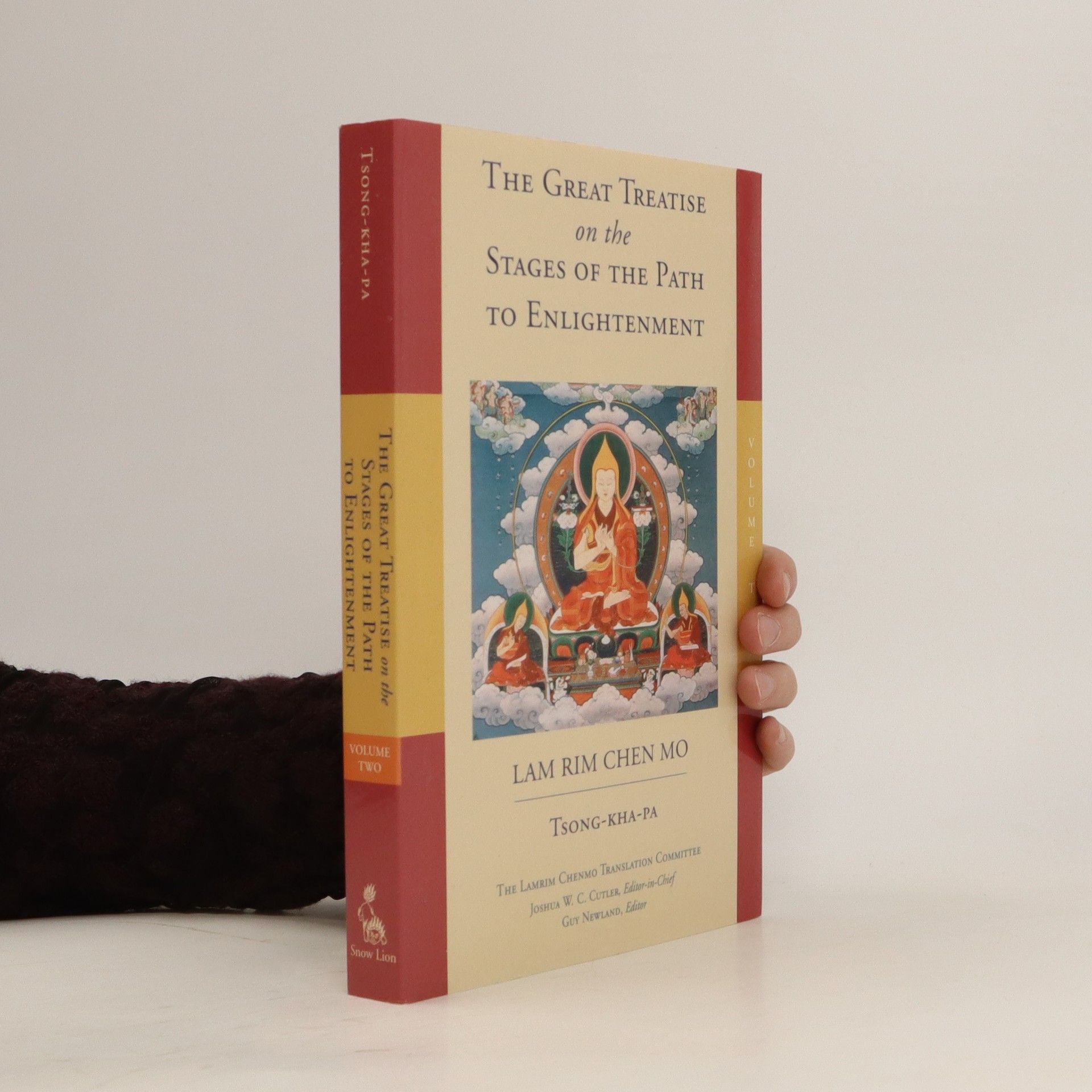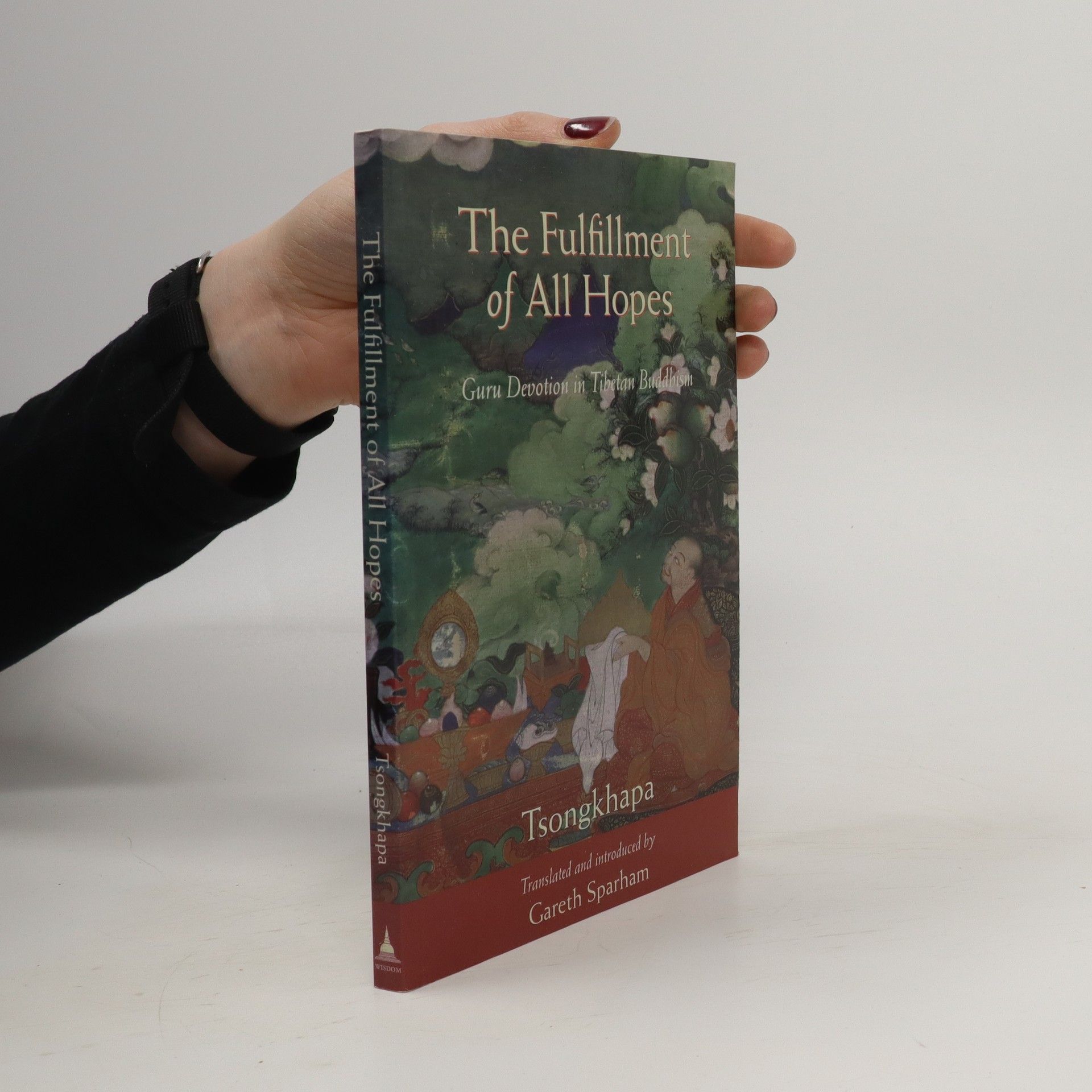Der mittlere Stufenweg
- 710 Seiten
- 25 Lesestunden
Je Tsongkhapa, auch bekannt als Lobsang Drakpa, war ein Mönch der Sakya-Tradition des tibetischen Buddhismus. Seine Aktivitäten waren entscheidend für die Entstehung der Gelug-Schule, obwohl er selbst nie die Gründung eines neuen Ordens ankündigte. Er legte den Grundstein für die zukünftige Entwicklung dieser einflussreichen Schule. Sein Erbe inspiriert bis heute viele Anhänger des tibetischen Buddhismus.




Why is it important to have a spiritual teacher? How does on enter into such a relationship intelligently?Devoting oneself to a spiritual teacher is a practice much misunderstood in the West, yet fundamental to the tantric Buddhism of Tibet. The Fulfillment of All Hopes is an explanation of this core practice by Tsongkhapa, one of Tibet's most revered scholar-practitioners.Presented here is a complete translation of Tsongkhapa's commentary on the well-known Fifty Stanzas on the Guru accompanied by the original Tibetan text.
The second volume of the 15th-century spiritual classic that condenses Buddhist teachings into one easy-to-follow meditation manualThe Great Treatise on the Stages of the Path to Enlightenment (Tib. Lam rim chen mo ) is one of the brightest jewels in the world’s treasury of sacred literature. The author, Tsong-kha-pa, completed it in 1402, and it soon became one of the most renowned works of spiritual practice and philosophy in the world of Tibetan Buddhism. Because it condenses all the exoteric sūtra scriptures into a meditation manual that is easy to understand, scholars and practitioners rely on its authoritative presentation as a gateway that leads to a full understanding of the Buddha’s teachings.Tsong-kha-pa took great pains to base his insights on classical Indian Buddhist literature, illustrating his points with classical citations as well as with sayings of the masters of the earlier Kadampa tradition. In this way the text demonstrates clearly how Tibetan Buddhism carefully preserved and developed the Indian Buddhist traditions.This first of three volumes covers all the practices that are prerequisite for developing the spirit of enlightenment ( bodhicitta ).
The third volume of the 15th-century spiritual classic that condenses Buddhist teachings into one easy-to-follow meditation manualThe Great Treatise on the Stages of the Path to Enlightenment (Tib. Lam rim chen mo ) is one of the brightest jewels in the world’s treasury of sacred literature. The author, Tsong-kha-pa, completed it in 1402, and it soon became one of the most renowned works of spiritual practice and philosophy in the world of Tibetan Buddhism. Because it condenses all the exoteric sūtra scriptures into a meditation manual that is easy to understand, scholars and practitioners rely on its authoritative presentation as a gateway that leads to a full understanding of the Buddha’s teachings.Tsong-kha-pa took great pains to base his insights on classical Indian Buddhist literature, illustrating his points with classical citations as well as with sayings of the masters of the earlier Kadampa tradition. In this way the text demonstrates clearly how Tibetan Buddhism carefully preserved and developed the Indian Buddhist traditions.This first of three volumes covers all the practices that are prerequisite for developing the spirit of enlightenment ( bodhicitta ).